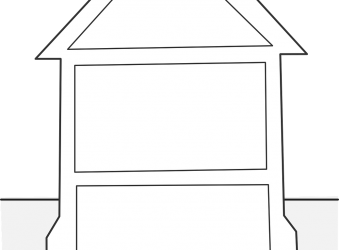
COMMONLY USED HOUSE FOOTINGS IN CHARLOTTE, NC
According to an independent study by a professional engineer, 25% of homes in America will experience some type of structural distress and 5% will have major structural problems.
Also of interest is that 80% of these structural problems are caused by the soil moving – either settling or expanding- and resulting in cracks, bulging or total failure of the foundation.
As a Charlotte homeowner, it is important to know about your home’s foundation – not just what it is made from, but the type of soil conditions it is resting on. This helps you take steps to ensure your home’s footing is as sturdy as it needs to be. The best way to do this is to bring in a soil engineer to review the soil at the foundation of your home. They will be able to determine what type of footing is needed and what capacity your soil has. (If you are building a new home this will benefit you significantly. If you are having your current home inspected, this will help determine if measures need to be taken to prevent future problems.)
5 TYPES OF FOOTINGS USED IN CHARLOTTE HOMES
When building homes in Charlotte, there are several types of footings that might be used, and the determination of which one should be implemented is typically based on location of the home, soil type, frost depth (the depth to which the groundwater is expected to freeze), and the architectural design of the home.
Here is an explanation of the most common Charlotte footings:
- Standard Footings and Stem Wall Construction – Typically, footings are 4 yards wide and 1.5 feet deep to 9 yards wide and 4 feet deep. Their depth varies based on terrain and they type of flooring chosen. They generally have a slab installed on them or a crawl space can be built.
- Drilled Shaft Concrete Piers and Grade Beam – Though more commonly used for commercial builds, it can be employed for large residential builds, or when there is high plasticity clay soil.
- Slab on Grade with a Turned-down Edge – This type of footing is more common in areas with little to no frost depth (a.k.a. frost line or freezing depth). It is often achieved using a monolithic pour and combined with post tension cables.
- Permanent Wood Foundations – These are more commonly used up North, but can be found in North Carolina. Wood foundations are achieved by framing in a basement with pressure treated wood and sit on poured concrete. Crawlspaces are built on to a footing made with driven timber and stem walls are built with pressure treated wood.
- Basement Foundation – These are built using CMU or cast-in place concrete walls and must include waterproofing in order to avoid long-term moisture issues. They are generally chosen due to function rather than because they are the most effective method for avoiding hydrostatic pressure and external earth pressure.
When it comes to your home’s footings, you don’t have to be the expert. Talk to a team member at Sherrill Structural Repairs to schedule an inspection. We are happy to share our knowledge to help you have a home that will last for years.



